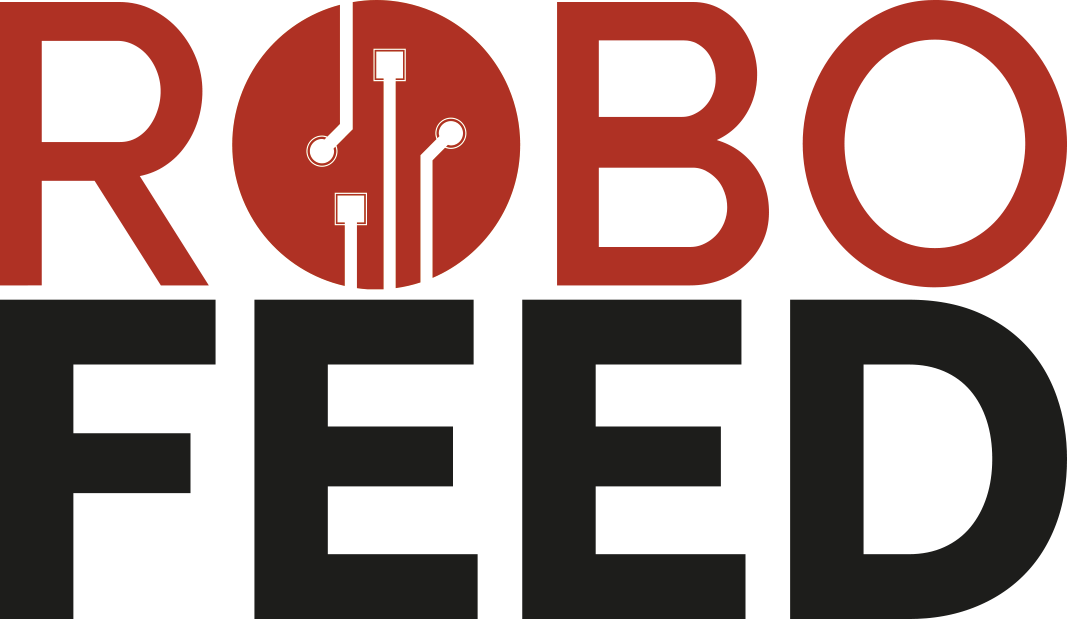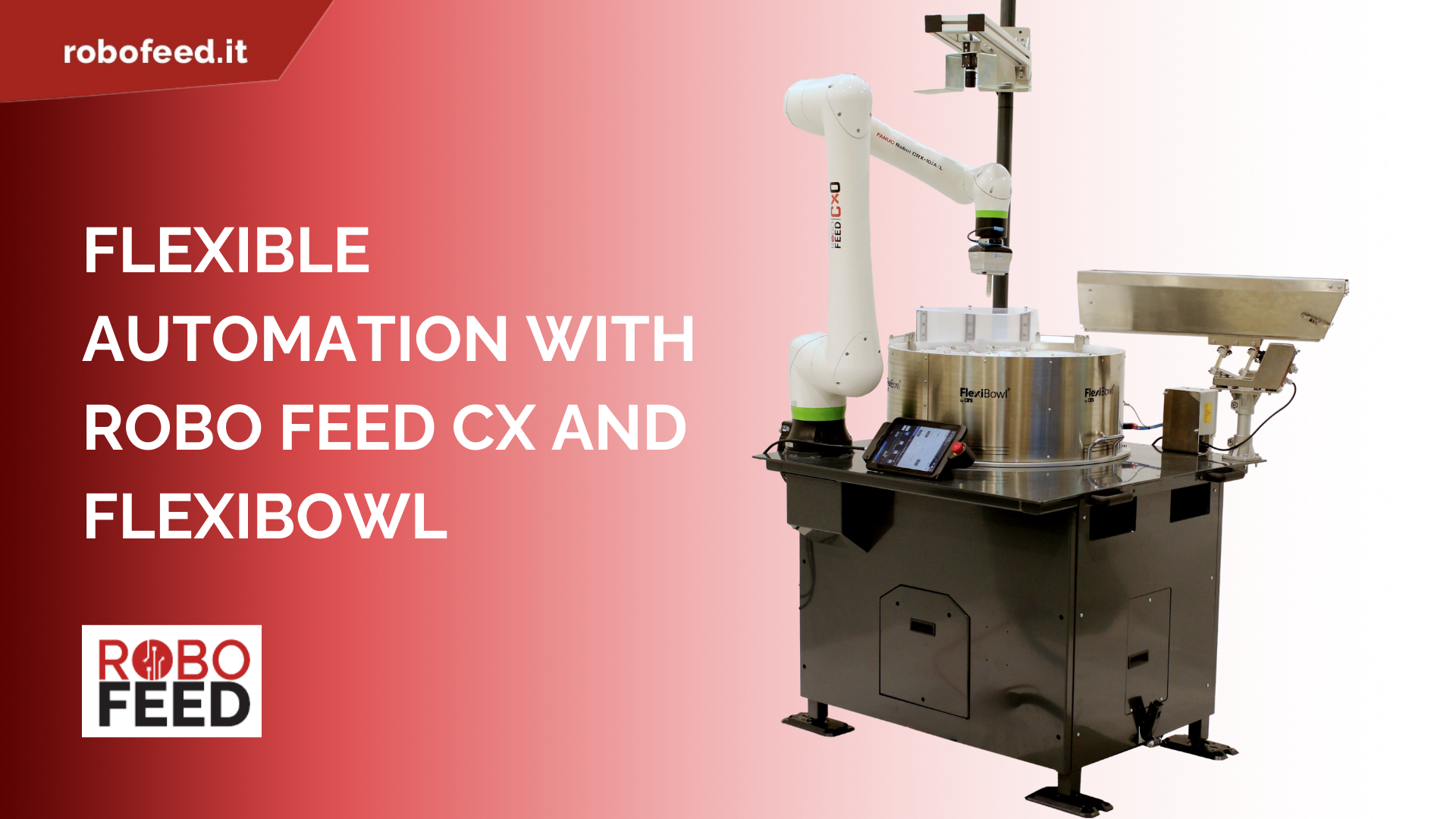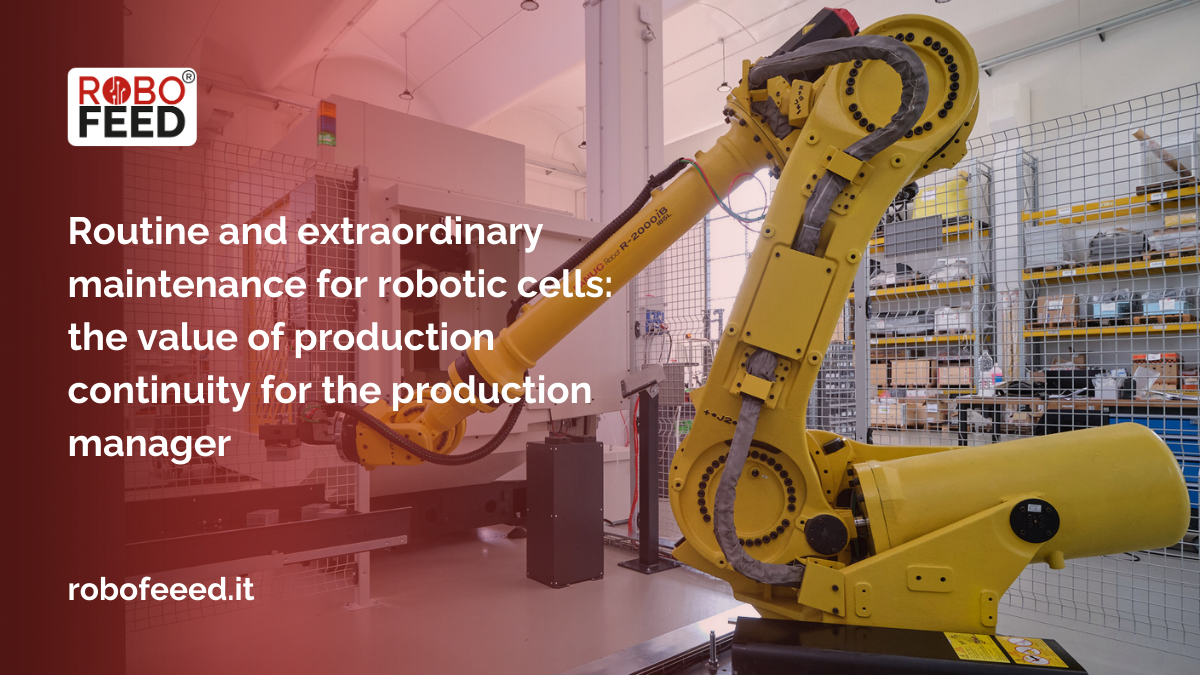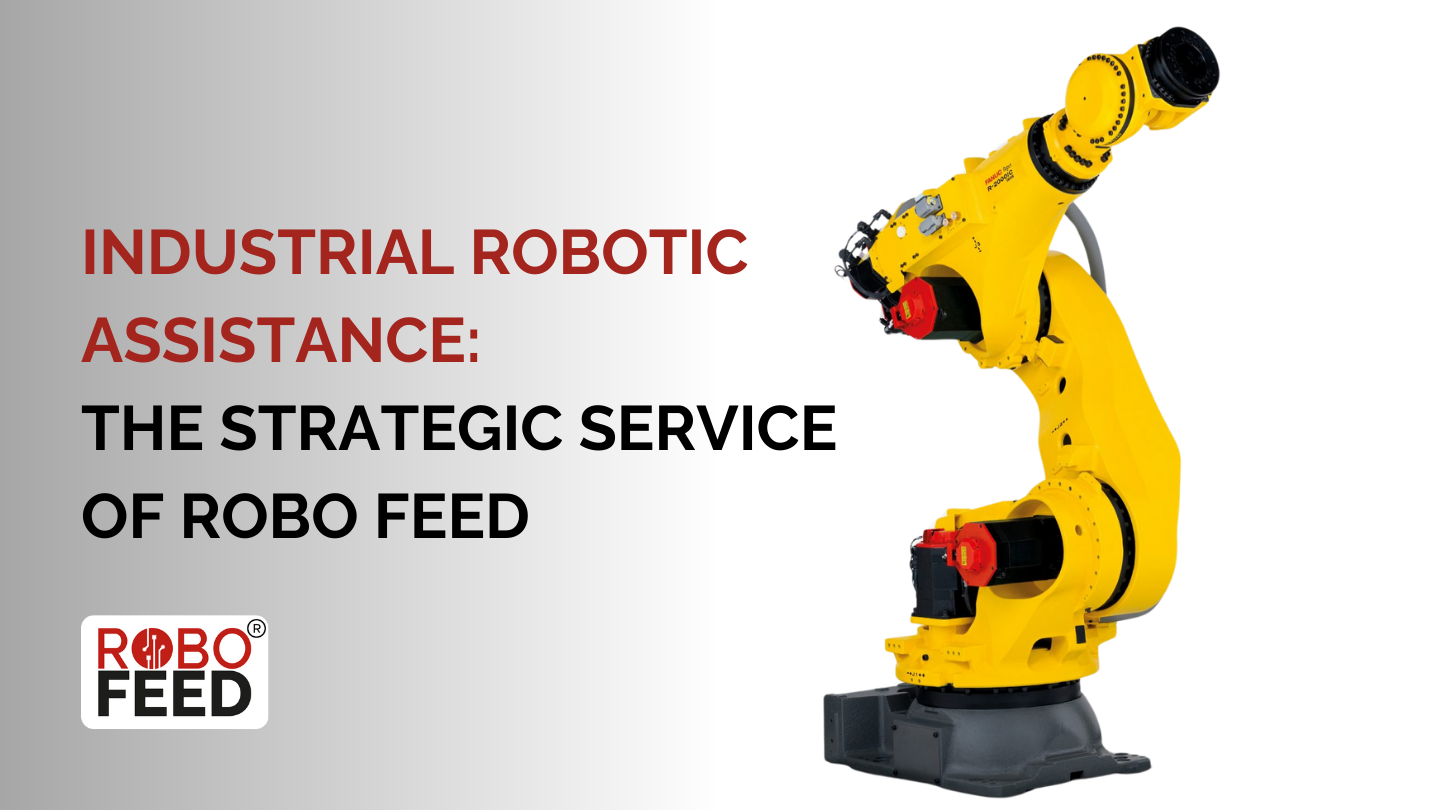In the industrial automation landscape, the combination of collaborative robots and flexible feeding systems represents a significant breakthrough. The integration of the ROBO FEED CX cobot and Ars Automation’s FlexiBowl system offers an advanced solution for optimising production processes, reducing changeover times and increasing operational efficiency.
Indice dei contenuti
ToggleROBO FEED CX: flexibility and compactness at the service of production
The ROBO FEED CX is a compact robot cell developed by Assistec, equipped with the Fanuc CRX-10iA/L cobot. Mounted on a trolley with electric lift for easy handling in the workshop, the cobot boasts a wrist capacity of 10 kg and a reach of 1418 mm.
ROBO FEED CX is designed to service CNC machine tools, ensuring safety and ease of use thanks to the robot’s collaborative functionality.
Main features:
- Compact dimensions: 870 x 1050 x 1050 mm, ideal for small spaces.
- Mobility: mounted on trolley with electric lift for easy movement.
- Intuitive software: developed by Assistec, it facilitates programming and integration with existing systems.
- Operational flexibility: allows manual operation of the CNC machine when required.
These features make the CX a versatile solution for various industrial applications.
FlexiBowl: versatile power supply for components of all shapes
The FlexiBowl® system from ARS Automation is an innovative feeding device that enables the orientation and separation of components without the need for retooling, regardless of part geometry, material and size.
Thanks to its compatibility with various industrial robots and machine vision systems, FlexiBowl enables efficient and precise feeding.
Main advantages:
- Easy integration: communication via Ethernet or I/O, with plugins available for most robots and PLCs.
- Quick changeover: facilitates batch changes without the need for retooling.
- Universal compatibility: works with components of different geometries and materials.
FlexiBowl is ideal for applications requiring frequent production changes and high component variability.
CX + FlexiBowl integration: a winning synergy
The combination of the ROBO FEED CX with the FlexiBowl creates a highly flexible and autonomous robot cell. The integrated vision system identifies and orients the components on the FlexiBowl disc, allowing the cobot to precisely pick them up and feed them to the CNC machine.
Benefits of integration:
- Operational flexibility: quick adaptation to different types of components and production processes.
- Reduced setup time: thanks to simplified programming and self-learning of the cobot.
- Space optimisation: compact design and mobility of the robot cell.
- Increased productivity: continuous and precise feeding of components.
- Safety and collaboration: collaborative robot designed to operate safely alongside human operators.
This integration is particularly beneficial for companies that handle variable production and need agile and efficient solutions.
Practical applications: from theory to the production line
The integration between the ROBO FEED CX and FlexiBowl finds application in numerous production contexts where flexibility, precision and adaptability are key elements. A concrete example is the assembly lines of electronic components, where the cobot is able to pick up micro-components with irregular geometries (such as capacitors, connectors, LEDs) fed by FlexiBowl, correctly oriented thanks to the vision system and precisely positioned on boards or frames.
In the automotive sector, the robot cell is used for the automatic preparation of assembly kits: FlexiBowl feeds bolts, gaskets or plastic clips, which the cobot picks up and places in boxes or directly in the line, supporting human operators without interrupting production.
Also in the field of precision mechanics, e.g. for CNC machining of small batches, the CX combined with FlexiBowl proves ideal: it can autonomously handle turned or milled components with variable geometries, optimising the machine tool load and drastically reducing downtime for retooling.
Finally, in the field of pharmaceutical packaging, integration allows bottles, caps or blisters of different shapes to be handled with extreme delicacy, ensuring batch traceability and compliance with the quality standards required by the industry.
These cases show how the CX cell, supported by a flexible feeding system such as FlexiBowl, is not only a technological innovation, but a concrete solution to meet the challenges of modern production: high variability, product customisation, and the need for agile automation.
CX + FlexiBowl vs. traditional solutions: the paradigm shift
Unlike traditional robot cells, which often require time-consuming custom design and complex retooling for each new component, the integration of ROBO FEED CX and FlexiBowl represents a true paradigm shift towards flexible automation.
Conventional feeding systems, such as circular vibrators or specific belts, work well in the case of one-off productions or repetitive batches, but show their limitations in contexts where frequent product changes are the norm. Each new geometry requires hardware changes, often with high downtimes and significant retooling costs.
The FlexiBowl system, on the other hand, requires no dedicated tooling: the same platter can feed components of different shapes and materials, reducing downtime and maximising efficiency. The CX cobot, for its part, is easily reprogrammable thanks to the intuitive software developed by Assistec, allowing the entire cell to be reconfigured very quickly and without the need for highly specialised personnel.
Furthermore, whereas a traditional plant often requires safety barriers, nets or fences, the Fanuc cobot integrated in the CX operates in collaborative mode. This allows direct interaction with the operator, improving flexibility of use and optimising shop floor space, all to the benefit of ergonomics and safety.
In summary, while traditional solutions prove effective in stable and standardised production environments, the CX + FlexiBowl pair emerges as the winning choice in terms of agile production, adaptability and quick return on investment.
Conclusion
The integration of the ROBO FEED CX cobot with the FlexiBowl system represents an advanced solution for flexible industrial automation. This combination makes it possible to meet the challenges of modern production, offering advantages in terms of efficiency, flexibility and return on investment.
FAQ – Frequently asked questions on CX + FlexiBowl integration
What types of parts can be handled with the CX-System and FlexiBowl?
The system can handle workpieces ranging in size from a few millimetres to around 250 mm, with irregular shapes, delicate surfaces or different materials, without the need to change hardware.
How long does it take to reconfigure the cell to a new product?
Thanks to the simplified programming of the CX cobot and the versatility of FlexiBowl, product changeover can take place in less than 30 minutes, drastically reducing downtime compared to traditional systems.
Does the system require special maintenance?
Maintenance is minimal: the FlexiBowl is designed for long-term reliability without the need for frequent servicing, while the CX benefits from Assistec’s technical and software support, with preventive maintenance packages on demand.
Is it necessary to protect the cobot work area with safety fences?
No, the Fanuc cobot integrated in the CX operates in collaborative mode. However, the risk analysis carried out by Assistec on each specific project defines whether and which additional safety measures are recommended.
In which areas is CX + FlexiBowl integration recommended?
Integration is ideal for electronics, precision mechanics, automotive, medical, cosmetics and pharmaceutical packaging, or in general wherever flexibility in handling small components is needed.








